Decisions to remain on treatment after switching between different infliximab biosimilars appear to have more to do with individual patient factors than drug-related factors or objective clinical outcomes. A retrospective analysis of patients in Denmark showed no change in clinical outcomes after one year and 83 percent treatment retention.

“Sixty percent of patients who ceased treatment after switching biosimilars did so because of subjective lack of treatment effect with the new agent,” said Hafsah Nabi, MD, Copenhagen Center for Arthritis Research, Copenhagen University Hospital Righospitalet, Glostrup, Denmark. “About 20 percent stopped due to adverse events, and the reasons are unknown for other patients. But when looking at objective measures of clinical outcomes for these patients, there was no difference before and after the switch between biosimilars.”
Dr. Nabi opened Plenary II on Sunday with one of the first studies of the patient-level effects of switching between biosimilars. The session is available for on-demand viewing for registered ACR Convergence participants through October 31, 2023, on the virtual meeting website.
Denmark generally mandates use of biosimilars to treat rhematic diseases when available in order to take advantage of cost savings compared to originator biologic agents and competition between biosimilars. Most data on switching is based on randomized clinical trials, Dr. Nabi noted, with little published data on real-world populations with long-term follow-up.
Researchers used data from DANBIO, a national registry with patient-level information, to explore the effects of switching between two infliximab biosimilars, CT-P13 and GP1111, among patients with rheumatoid arthritis, psoriatic arthritis, and ankylosing spondylitis. The registry identified 1,605 patients who switched biosimilars between April 2019 and February 2020. Within the group, 1,171 patients were naïve to infliximab and 434 patients had been on infliximab, switched to CT-P13 and then switched to GP1111.
Patients in the originator-naïve group tended to be younger, have shorter duration of disease and higher baseline disease activity compared to originator-experienced patients. Among originator-experienced patients, 91.9 percent remained on GP1111 after switching from CT-P13, compared to 82.7 percent of originator-naïve patients (HR=0.36, p=0.001). Patients with higher baseline activity were more likely to stop treatment after the switch. Patients with higher self-assessed disease activity such as the Visual Analog Scale (VAS) were more likely to withdraw from treatment after switching (HR=0.02, p<0.001).
“These results suggest that treatment outcomes may be affected by patient-related factors more than by drug-related factors,” Dr. Nabi said.
Remibrutinib a potential agent in Sjögren’s syndrome

Remibrutinib, an oral, covalent, high-specific Bruton’s tyrosine kinase (BTK) inhibitor with documented activity in chronic urticaria, may also be effective in Sjögren’s syndrome. The proof-of-concept LOU054 in Sjögren’s Syndrome (LOUiSSE) phase 2 trial showed significant improvement in EULAR Sjögren’s syndrome disease activity index (ESSDAI), salivary flow, and pathologically elevated immunoglobulins compared to placebo over 24 weeks.
“Sjögren’s is a B cell-driven autoimmune disease with difficult-to-treat symptoms, including oral and ocular dryness, fatigue, and joint pain,” said Thomas Dörner, MD, Professor for Innovative Therapies in Autoimmune Diseases, Charite Universitätsmedizin Berlin, Germany. “BTK plays a crucial role in B cell receptor signaling and has emerged as a potential therapeutic option for a wide spectrum of autoimmune diseases.”
LOUiSSe randomized 73 patients with moderate to severe Sjögren’s to remibrutinib 100 mg twice daily, remibrutinib 100 mg daily, and placebo. The primary was change in baseline ESSDAI at week 24.
Both doses of remibrutinib were similarly safe and effective, Dr. Dörner reported, and the results for the two arms were combined for reporting.
Participants’ ESSDAI score declined by 2.86 points for remibrutinib versus placebo (p=0.003). There was no significant difference in patient-reported outcomes, likely due to the short duration of the trial, although there was a numeric trend favoring increased unstimulated salivary flow. Disease markers, including CSCL13, IgG, IgM, and antibodies, improved significantly in the remibrutinib arm.
“Remibrutinib had a favorable safety profile compared to placebo and was well-tolerated over 24 weeks,” Dr. Dörner said.
3-D skin modeling identifies antifibrotic targets in systemic sclerosis

A novel approach that combines computational drug repositioning and 3-D skin models has identified estimated glomerular filtration rate (eGFR) and phosphoinositide 3-kinases (PI3K) inhibitors as potential antifibrotic targets in systemic sclerosis (SSc). There are currently just two therapies approved for SSc by the U.S. Food and Drug Administration, nintedanib and tocilizumab, both indicated for interstitial lung disease and neither curative of SSc.
“We identified four cohorts of SSc patients based on genetic signatures: fibroproliferative, inflammatory, limited, and normal-like patients with a gene signature for SSc but no clinical manifestations,” said Dillon Popovich, BS, Geisel School of Medicine, Dartmouth College. “Using gene set variation analysis, we tested multiple potential drug agents to identify potential candidates based on how they perturbed pathways, then tested them on 3-D skin-like tissues.”
The goal was to identify agents that appear to down-regulate clinically important pathways, he explained. The most likely candidates were LY294002, a PI3K inhibitor in fibroproliferative SSc, and gefitinib, an endothelial growth factor receptor inhibitor, in inflammatory SSc.
Both agents showed evidence of positive activity on 3-D cultures of self-assembled stroma that mimics the dermis and self-assembled skin equivalent that mimics epithelium plus dermis. Testing involved both fibroblast cultures from SSc patients that replicate the fibrotic features of SSc skin and reference cultures replicating healthy skin.
“These two small molecules show disease-specific effects in our 3-D tissue culture system,” Popovich said. “Tissue model experiments incorporating autologous monocytes and plasma from patients and healthy controls to more accurately replicate skin will begin soon.”
Co-pays influence treatment adherence in SLE

Treatment adherence is essential to improving systemic lupus erythematous (SLE) outcomes, but adherence to common medications is as low as 15 percent. Multiple factors can affect adherence, including household income, education, cost, and other elements, but there have been few studies looking at the potential association between drug co-pays and adherence.
“We hypothesized that higher co-pays would be associated with decreased adherence to commonly prescribed SLE drugs, including hydroxychloroquine, azathioprine, mycophenolate mofetil, and methotrexate,” said Raisa Lomanto Silva, MD, PGY-3 Internal Medicine Resident, University of Pittsburgh Medical Center. “We used a retrospective analysis of health claims data from the Optum Clinformatics Data Mart database looking at SLE diagnoses from July 2010 to December 2019. We excluded COVID, knowing there were significant impacts on adherence.”
The study assessed the co-pay for 30-day medication supplies and adherence, assessed as equal to or greater than 80 percent proportion of days covered, based on age, sex, race, ethnicity, comorbidities, income, and education. The cohort included more than 12,000 patients with a mean age of 54 years and predominately (88.2 percent) female. The racial distribution of participants was 63.2 percent white and 14.9 percent Black, and 53.7 percent had less than a bachelor’s degree-level of education. Household income was less than $40,000 for 25.4 percent of participants and $100,000 or more for 27.4 percent.
Analysis showed an association between co-pays and lower odds for adherence, Dr. Silva reported. At co-pays above $10 per 30-day supply, the odds of adherence dropped by 32 percent for mycophenolate mofetil, 39 percent for hydroxychloroquine, and 56 percent for azathioprine. There was no association for methotrexate. Neither household income nor education level affected the association between higher co-pays and lower adherence.
“We were surprised that household income did not make a difference, although these were all insured patients, either commercial insurance or Medicare,” Dr. Silva said. “As clinicians, we must be aware of the association between co-pay and adherence. We cannot change what we do not measure.”
Peripheral blood DNA methylation may be useful biomarker for OA

It is difficult to predict the course of knee osteoarthritis (OA), a heterogenous disease characterized by a variety of clinical and molecular phenotypes. There are currently no widely available biomarkers that can accurately assess the likely progression of OA and no approved treatments.
“One problem is that existing models require multiple values over multiple timepoints, which is not practical for clinical trials or for practice,” explained Matlock Jeffries, MD, FACP, FACR, Associate Member, Oklahoma Medical Research Foundation. “We tried epigenetic markers, peripheral blood DNA methylation patterns, which tend to be more stable over time than biologic markers. A pilot study gave us an area under the curve of 0.81, which prompted us to expand to a larger cohort.”
Researchers obtained buffy coat DNA from 554 participants in the Foundation for the National Institutes of Health (FNIH) Osteoarthritis Biomarkers Consortium and analyzed for DNA methylation using 850,000 methylation sites.
“We found we could get similar results looking at just the most predictive methylation markers, which turned out to be 13 sites,” Dr. Jeffries said. “We developed a parsimonious model using those 13 methylation sites.”
The full model predicted radiographic progression with 87 percent accuracy (AUC=0.94), pain progression with 89 percent accuracy (AUC=0.97), pain plus radiographic progression with 72 percent accuracy (AUC=0.79), and any progression with 78 percent accuracy (AUC=0.86). The parsimonious model was nearly as good, with 89 percent accuracy for radiographic progression (AUC=0.94), 90 percent accuracy for pain (AUC=0.95), 76 percent accuracy for pain plus radiographic progression (AUC=0.85), and 82 percent for any progression (AUC=0.89).
“Our models performed well on three different cohorts,” Dr. Jeffries reported. “The models can accurately predict two to five years in advance based on peripheral blood samples.”
Deucravacitinib shows promise in SLE

Results of a phase 2 randomized controlled trial of deucravacitinib, an oral, selective, allosteric tyrosine kinase 2 (TYKK2) inhibitor suggest the agent may be useful for patients with active SLE. The 48-week, dose-ranging trial showed statistically significant improvement in the SLE responder index (SRI) versus placebo at 32 weeks as well as SRI and other symptom scores and joint counts at 48 weeks.
“We saw no added benefit from increasing the dose of deucravacitinib from the lowest 3 mg BID dose,” said Marilyn Pike, MD, PhD, President, MedPharm Consulting. “Deucravacitinib shows promise as a novel therapy for SLE and warrants further investigation in phase 3 trials.”
The phase 2 PAISLEY trial compared three doses of deucravacitinib, 3 mg twice daily, 6 mg twice daily, and 12 mg daily against placebo in 363 patients with moderate-severe SLE over 48 weeks. The agent is approved for use in plaque psoriasis in the U.S. and other jurisdictions.
The primary endpoint was SRI(4) response rate at week 32.
The 3 mg dose showed 58.2 percent response versus 34.4 percent for placebo (p=0.0006). Other deucravacitinib doses also showed improved scores, 49.5 percent for 6 mg twice daily (p=0.02) and 44.9 percent for 12 mg daily (p=0.0781). At week 48, SRI(4) scores were 57.1 percent for 3 mg twice daily versus 34.4 percent for placebo (p=0.001), 47.3 percent for 6 mg twice daily (p=0.0434), and 47.2 percent for 12 mg daily (p=0.0439).
There were no significant differences in serious adverse events, although there were more discontinuations for adverse events in the active arms versus placebo, 8.8 percent, 6.5 percent, and 12.4 percent versus 3.3 percent.

Registered ACR Convergence 2024 Participants:
Watch the Replay
Select ACR Convergence 2024 scientific sessions are available to registered participants for on-demand viewing through October 10, 2025. Log in to the meeting website to continue your ACR Convergence experience.
